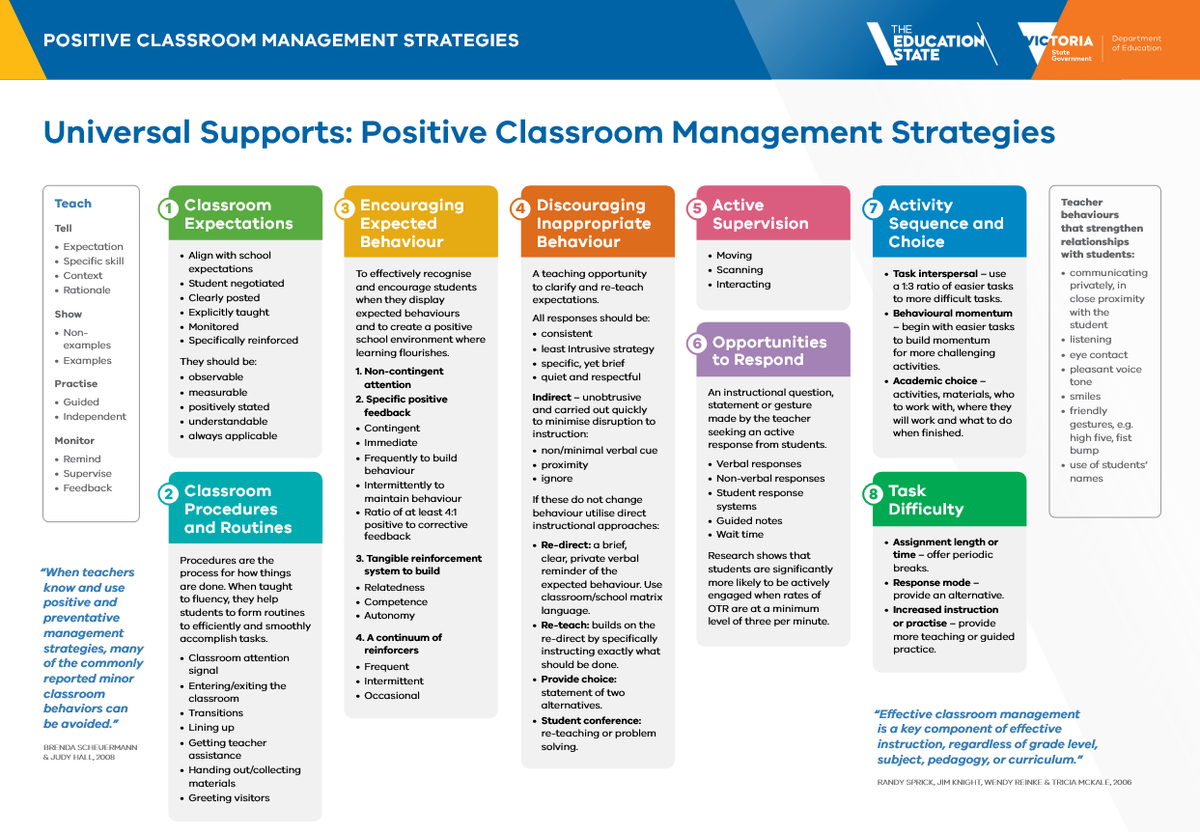And now a word from
Mrs Richards...

And now a word from
Mrs Richards...
At Parkdale Primary School, we are dedicated to creating a positive and engaging learning environment for our students. In 2025, one of the key ways we plan to achieve this is through use of the Positive Classroom Management Strategies (PCMS). These strategies help foster a sense of respect, responsibility, and enthusiasm in the classroom with a focus on reinforcing good behaviour, creating structured routines, and maintaining a supportive classroom atmosphere.


‘The PCMS consist of 8 evidence-informed instructional practices designed to create safer, purposeful learning environments. These practices support student learning and wellbeing through teaching positive behaviours. The practices are based on the guiding principle that behaviour can be taught with explicit teaching and positive reinforcement and disciplinary measures alone do not teach students what to do.
The PCMS are founded on the following guiding principles:
Appropriate and inappropriate behaviours are related to the environment in which they occur. Environments can encourage appropriate or inappropriate behaviours.
Behaviour is functional. Individuals learn to use behaviours to get their needs met. Behaviour that works is likely to continue.
Behaviour can be taught. It is possible to teach alternative replacement behaviours to meet students' needs more appropriately.
Here are some of the key strategies our teachers use to promote a positive classroom experience:
✅ Clear Expectations: Teachers set clear, age-appropriate expectations to help students understand what is expected of them. The teachers have worked to ensure that these expectations are uniform and consistent across the school. We begin the year with a “Learning to Learn” program during which rules, protocols and expectations are established and linked in with our Super 6 Values.
✅ Positive Reinforcement: We celebrate good behaviour with praise, rewards, and recognition to encourage students to make positive choices.
✅ Consistent Routines: Predictable classroom routines help students feel secure and confident in their learning environment. Chat to your children about the routines that have been established for lining up and entering and exiting classrooms
✅ Engaging Lessons: Interactive and student-centred teaching methods keep students interested and motivated. Miss Bradney discussed explicit, direct instruction and the the “I do, We do, You do” pedagogical approach in the last Focus.
✅ Restorative Practices: When conflicts arise, we guide students through reflection and problem-solving first rather than punishment. There are a set of consequences that we have drafted and are currently trialling. I will discuss these in the next Focus edition.
How Can You Support PCMS at Home?
Parents play a vital role in reinforcing positive behaviour. Here’s how you can help:
✔️ Encourage Good Behaviour: Praise your child when they demonstrate kindness, responsibility, or respect.
✔️ Set Consistent Routines: Establishing daily schedules for homework, chores, and bedtime promotes responsibility.
✔️ Model Respectful Communication: Children learn by example, so speaking with kindness and patience makes a big difference.
✔️ Work Together with Teachers: Keep open communication with teachers to support your child’s social and academic development

